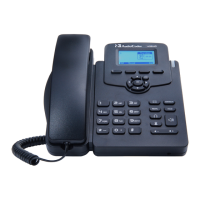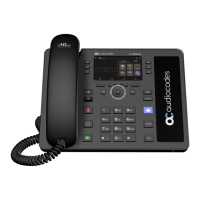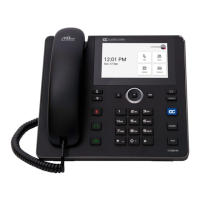Administrator's Manual 4. Configuration File
Version 2.2.8 29 400HD Series IP Phones
4 Configuration File
This section describes the configuration file and the parameters you can configure in it.
4.1 Introduction
The configuration file can be loaded to the phone using the automatic provisioning
mechanism, or manually from your local computer using the Web interface (see Section 3 on
page 25). The subsections below describe configuration file syntax and linking additional
configuration files to a configuration file.
4.2 File Syntax
The configuration file can be created using a standard ASCII, text-based program such as
Notepad. The configuration file is a .cfg file with the file name being the phone's MAC
address: <phone's MAC address>.cfg.
The syntax of the configuration file is as follows:
<parameter name>=<value>
Ensure that the configuration file adheres to the following guidelines:
No spaces on either side of the equals (=) sign.
Each parameter must be on a new line.
Below is an example of part of a configuration file:
system/type=440HD
voip/line/0/enabled=1
voip/line/0/id=1234
voip/line/0/description=440HD
voip/line/0/auth_name=1234
voip/line/0/auth_password=4321
4.3 Linking Multiple Files
The Configuration file allows you to include links (URL and/or file name) to other
Configuration files that provide additional parameter settings. This is especially useful in
deployments with multiple phones, where the phones share common configuration but
where each phone has some unique settings. In such a scenario, a phone's Configuration file
can include unique parameter settings as well as links to additional Configuration files with
settings common to all phones.
Linking additional files is achieved by using the include function in the phone's Configuration
file. For example, the below Configuration file provides links to additional Configuration files
(shown in bolded font):
system/type=440HD
include 440HD_<MAC>_voip.cfg
include vlan_conf.cfg
include network_conf.cfg
include provisioning_conf.cfg

